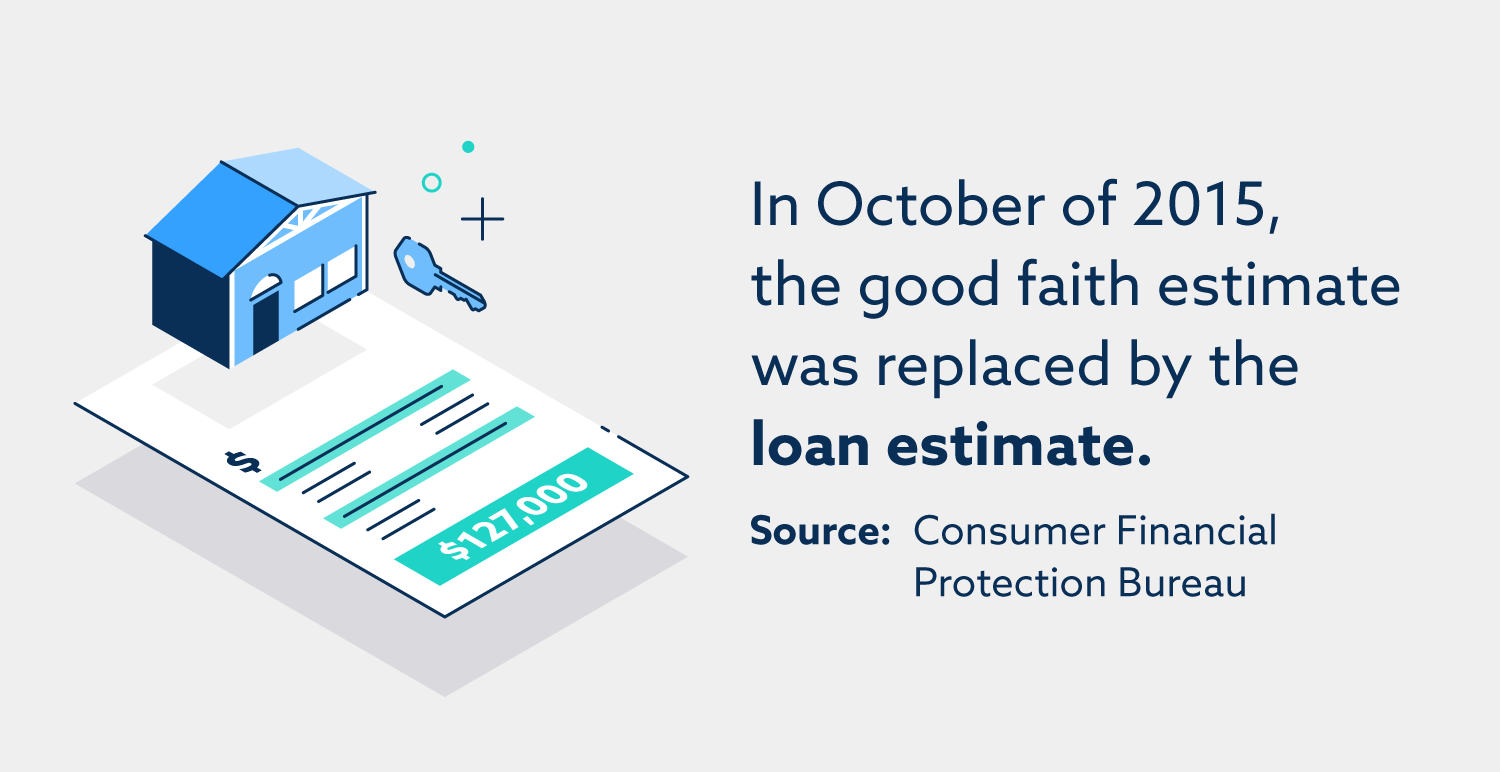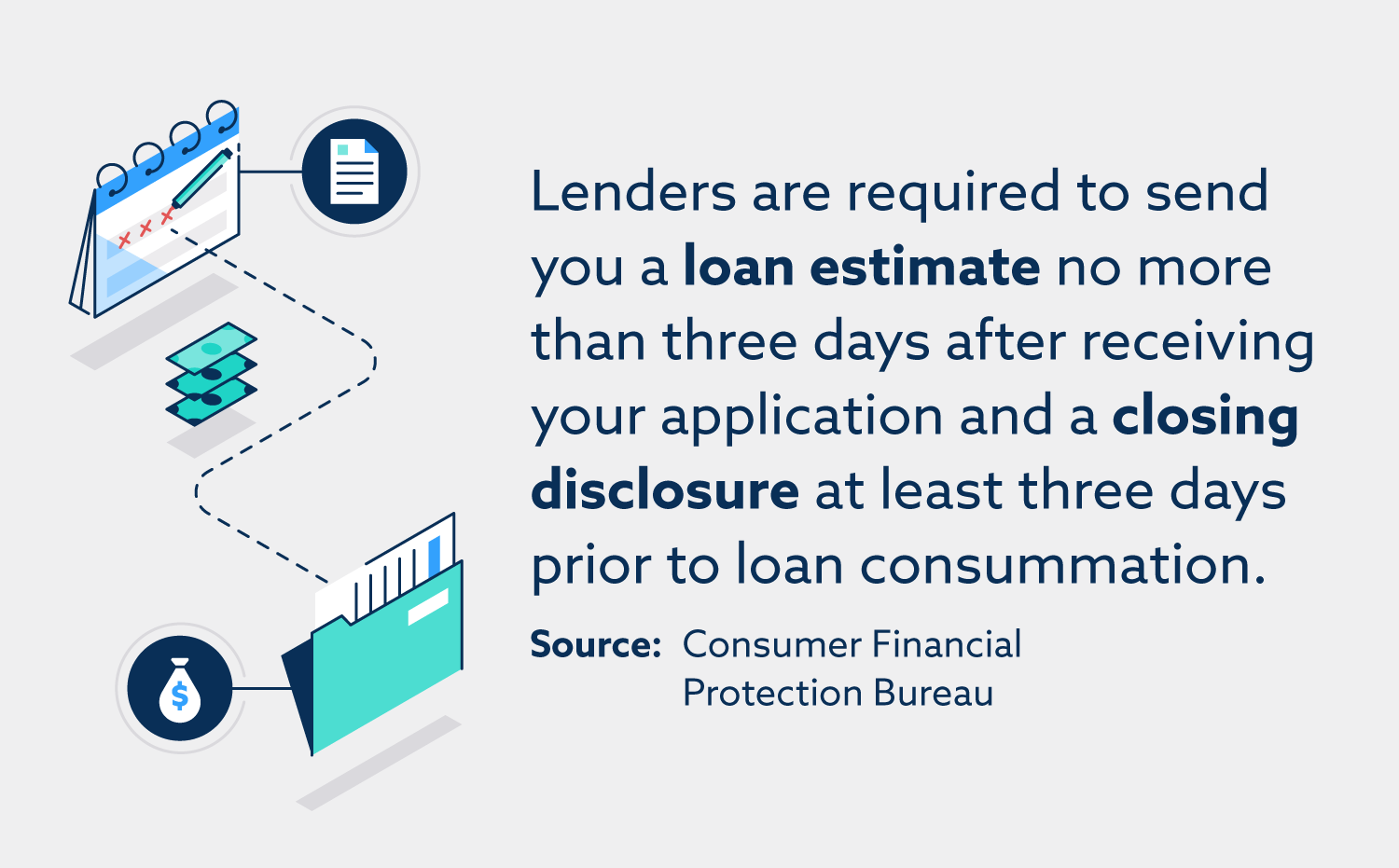
The information provided on this website does not, and is not intended to, act as legal, financial or credit advice. See Lexington Law’s editorial disclosure for more information.
A good faith estimate (GFE) is a comparison of mortgage offers provided by lenders or brokers to a consumer.
A good faith estimate (GFE) is a comparison of mortgage offers provided by lenders or brokers to a consumer. It was recently replaced by the loan estimate—a similar concept with a few small differences.
What Is a Good Faith Estimate Designed to Do?
The GFE’s purpose was to present mortgage shoppers with all the details they need to know about their mortgage options to help them make well-informed decisions. This transparency ensures consumers are aware of all the costs associated with the mortgage—including fees, APR and other expenses.
Borrowers would receive a GFE three business days after submitting their mortgage application, and after thorough review, would then select which mortgage option they would like to move forward with.
Are Good Faith Estimates Still Used?
The term “good faith estimate” is not used by lenders anymore, but the concept remains prevalent. In 2015, the GFE was replaced by the loan estimate. Anyone who purchased a home after October 3, 2015, received a loan estimate rather than a GFE.

If you applied for a reverse mortgage, HELOC, a mortgage through an assistance program or a manufactured loan not secured by real estate, you will not receive a loan estimate. Instead, you will receive a Truth-in-Lending disclosure.
The purposes of a GFE, a loan estimate and a Truth-in-Lending disclosure are largely the same: providing transparency to borrowers. The main difference—and benefit—of a loan estimate is that there’s more regulation by the Consumer Financial Protection Bureau (CFPB). Since the GFE was not standardized through regulations, they were sometimes difficult to decipher, especially for first-time homebuyers. Conversely, each loan estimate must contain the exact same information in a standardized way, which we’ll cover below.
What Appears on a Loan Estimate?
According to the CFPB, a complete, compliant loan estimate should include the length of the loan term, the purpose of the loan, the product (fixed versus adjustable interest rate, for example), the loan type (conventional, FHA, VA or other), the loan ID number and indication of an interest rate lock. Additionally, the loan estimate will include the following:
- Loan terms: A summary of the total loan amount, interest rate, monthly principal and interest and penalties, and whether these amounts can increase after closing.
- Projected payments: A summary of monthly principal, interest, mortgage insurance, taxes and insurance. Broken down by years 1–7 and 8–30 for a 30-year mortgage.
- Costs at closing: Estimated closing costs and the total estimated cash needed to close, which includes the down payment and any credits.
- Loan costs: Origination charges—which is broken down by 0.25% of the loan amount, application fees and underwriting fees—and other fees.
- Other costs: Taxes, government fees, prepaid homeowners insurance, interest and prepaid property, escrow payment at closing and title policy.
- Comparisons: Metrics you can use to compare your loan to others. Includes the total principal, interest, mortgage insurance and loan costs you will have paid after five years.
- Other considerations: Information about appraisal, assumption, homeowner’s insurance, late payment fees, refinancing and servicing.
- Confirmation of receipt: A line at the end of the statement that confirms you have received the form. This does not legally bind you to accept the loan.
Your loan estimate will also include your personal information, including your full name, income, address and Social Security number. Make sure to double-check all of this information for errors, as they could cause potential problems later in the process.
To better understand your loan estimate, explore the CFPB’s interactive guide.
Closing Disclosure
For first-time homebuyers in particular, it’s important to understand the timeline of events so that you can be prepared for your home buying process and have all the information and necessary documents at hand.
Closing Disclosure Timeline
Lenders are required to send you a loan estimate form no more than three business days after receiving your application. Finally, at least three business days prior to loan consummation—when you are contractually obligated to the loan—you will receive a closing disclosure.

What Is the Purpose of a Closing Disclosure?
The purpose of a closing disclosure is to assign “tolerance levels” to fees listed in the loan estimate form. This means that fees cannot increase over their tolerance level unless a specific triggering event occurs. There are three different tolerance levels:
- Zero percent tolerance: Fees in this category cannot increase from what is listed on the loan estimate. These fees are typically those paid to a creditor, broker or affiliate, such as origination fees.
- 10 percent cumulative tolerance: Fees in this category are added together, and the sum of these fees are not to increase by more than 10 percent of the amount listed in the loan estimate. Fees include recording fees and third-party service fees.
- No tolerance or unlimited tolerance: Fees in this category have no limits at all, and can increase by any amount, as long as they are disclosed “in good faith,” using the best information available. These are usually fees lenders have little to no control over.
Remember not to confuse “zero percent tolerance” with “no tolerance,” as they are quite different. Zero percent tolerance fees cannot increase, while no tolerance fees can increase by any amount as long as it is considered “in good faith.”
Does a Loan Estimate Affect My Credit?
The act of applying for a mortgage may temporarily cause your credit score to dip, as it requires a hard inquiry by lenders. However, you may shop around for different mortgages from different lenders to get multiple preapprovals and loan estimates. As long as you do this all within a 45-day window, these separate credit checks will be recorded on your credit report as one single hard inquiry.
This is because lenders realize that you are only going to buy one home, so they categorize all of the actions you take under one umbrella of applying for a mortgage. Note that you may want to consider the 45-day rule loosely. Prioritize finding the best mortgage deal possible. Even if this means processing a hard inquiry outside of the 45-day window for a better deal, you’ll likely end up saving more money in the long run.
To learn more about what affects your credit and how to work toward improving your credit profile, contact our team at Lexington Law.
Note: Articles have only been reviewed by the indicated attorney, not written by them. The information provided on this website does not, and is not intended to, act as legal, financial or credit advice; instead, it is for general informational purposes only. Use of, and access to, this website or any of the links or resources contained within the site do not create an attorney-client or fiduciary relationship between the reader, user, or browser and website owner, authors, reviewers, contributors, contributing firms, or their respective agents or employers.
